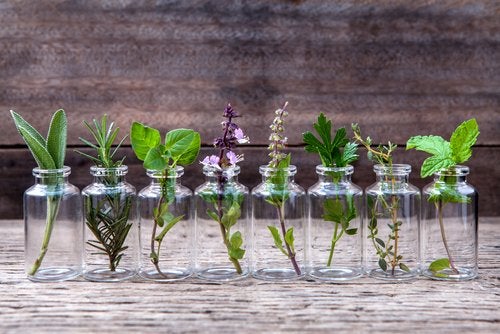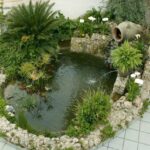If you want to be the envy of your neighborhood, we will tell you how you can create original, practical and simple pots from recycled containers. Take note!

If you are fond of plants and have a garden at home, you will surely be interested in what we are going to tell you next. We are going to show you some tricks to make pots with recycled containers.
Containers to make your own pots.
Plants give us more than one joy, since they are not only good for giving a note of color to our house or plot, but they also provide us with benefits and healthy properties.
The plants we buy usually come with plastic pots that are temporary, but once at home we have to transplant them into pots suitable for the type of plant, taking into account their size and what they will grow.
On the market there are many pots made from various materials: clay, marble, wood or plastic; However, in this article we want to show you some pots made from recycled materials to inspire you so you can make your own at home.
Depending on the style of house you have or the capacity of your garden, you will be more interested in some trends or others. It is not the same to decorate a plant with a glass container than to do it with a shoe or a watering can.
Here are the best ideas for decorating your home.
1. Felt containers.
The felt has begun to be used for many articles and decorative objects, either to make gifts or to decorate our home. You can also use it to line your pots or make felt bags for plants.
You can make them in such a way that you can hang them or deposit them on the stairs that lead to your garden.
It is a craft that requires some practice with the thread and the needle, so if you are a lover of sewing, it can be a good way to bring out your skills.
2. Tin cans.
The next time you have a can of preserves, don’t throw it away, it could be your future pot, since they are made of metal and, therefore, are very resistant.
Once clean and without the content label, pierce the bottom so that the water can pass through and line it or paint it in colors.
3. Plastic bottles.
We can reuse these common containers and use them to make fun pots.
Plastic is a very resistant material as well as malleable. You can cut the area of the nozzle and use the body as a vertical pot. However, if you knock it over, you can make wider pots and add another touch of originality to your garden.
Do not forget to save the plugs, because you may need them so that the dirt does not escape.
You can add a touch of color to the bottles and paint them.
4. Glass bottles.
Another type of container that we usually have at home is glass. From now on you can take advantage of your soft drinks.
It is true that these bottles cannot be modified in size or shape, but you can combine them, group them or paint the surfaces. You can also cover them with fabrics or ropes to give it a more rustic touch.
5. Yogurt containers.
Who hasn’t ever planted legumes in a yogurt container when they were little? It is one of the most practical containers that we can get to make pots at home. They are small, simple and very inexpensive.
It may not be the most durable material, however if you want to have an afternoon fun with your children or nephews, you can plant legumes and seeds and create a small greenhouse at home.
6. Glass container.
We will use it in the same way as glass bottles. We refer to jars of jam, sauces or pickles. Anyone is valid to give life with a new plant.
We have to bear in mind that plants need water but in just the right amount; for this reason, since you cannot easily make holes, we advise you to place plants that need little water, such as cacti.
You can also get an old vase, a broken glass or a cup with a missing handle. Any container or container works, we just have to have the space and inspiration to plant our plants there.
The pots bring vitality and joy to our homes. From now on you will not be blank and you can give a touch of originality to your home.


